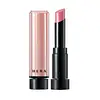What's inside
What's inside
 Key Ingredients
Key Ingredients

 Benefits
Benefits

 Concerns
Concerns

 Ingredients Side-by-side
Ingredients Side-by-side

Phytosteryl/Isostearyl/Cetyl/Stearyl/Behenyl Dimer Dilinoleate
Skin ConditioningPolyglyceryl-10 Decaisostearate
EmollientMethyl Hydrogenated Rosinate
PerfumingBis-Diglyceryl Polyacyladipate-2
EmollientHelianthus Annuus Seed Wax
Skin ConditioningOctyldodecyl Neopentanoate
EmollientTriolein
Skin ConditioningPolyglyceryl-2 Triisostearate
EmulsifyingOryza Sativa Bran Wax
Skin ConditioningPolyamide-8
EmollientCI 77891
Cosmetic ColorantCI 77491
Cosmetic ColorantDipalmitoyl Hydroxyproline
Skin ConditioningSucrose Tetrastearate Triacetate
EmollientSilica Dimethyl Silylate
EmollientEuphorbia Cerifera Wax
Polyhydroxystearic Acid
EmulsifyingLimonene
PerfumingLecithin
EmollientCI 15850
Cosmetic ColorantEthylhexyl Palmitate
EmollientIsostearic Acid
CleansingIsopropyl Myristate
EmollientCI 77220
Cosmetic ColorantPolyglyceryl-3 Polyricinoleate
EmulsifyingCitrus Limon Peel Oil
MaskingDiphenyl Dimethicone
EmollientCI 77499
Cosmetic ColorantCI 42090
Cosmetic ColorantOenothera Biennis Oil
EmollientPhytosterols
Skin ConditioningCitral
PerfumingPentaerythrityl Tetra-Di-T-Butyl Hydroxyhydrocinnamate
AntioxidantCitronellol
PerfumingPelargonium Graveolens Flower Oil
MaskingTocopherol
AntioxidantLinalool
PerfumingGeraniol
PerfumingVegetable Oil
Skin ConditioningPhytosteryl/Isostearyl/Cetyl/Stearyl/Behenyl Dimer Dilinoleate, Polyglyceryl-10 Decaisostearate, Methyl Hydrogenated Rosinate, Bis-Diglyceryl Polyacyladipate-2, Helianthus Annuus Seed Wax, Octyldodecyl Neopentanoate, Triolein, Polyglyceryl-2 Triisostearate, Oryza Sativa Bran Wax, Polyamide-8, CI 77891, CI 77491, Dipalmitoyl Hydroxyproline, Sucrose Tetrastearate Triacetate, Silica Dimethyl Silylate, Euphorbia Cerifera Wax, Polyhydroxystearic Acid, Limonene, Lecithin, CI 15850, Ethylhexyl Palmitate, Isostearic Acid, Isopropyl Myristate, CI 77220, Polyglyceryl-3 Polyricinoleate, Citrus Limon Peel Oil, Diphenyl Dimethicone, CI 77499, CI 42090, Oenothera Biennis Oil, Phytosterols, Citral, Pentaerythrityl Tetra-Di-T-Butyl Hydroxyhydrocinnamate, Citronellol, Pelargonium Graveolens Flower Oil, Tocopherol, Linalool, Geraniol, Vegetable Oil
Ricinus Communis Seed Oil
MaskingCaprylic/Capric Triglyceride
MaskingIsopropyl Lanolate
EmollientEuphorbia Cerifera Wax
Cetyl Lactate
EmollientParaffin
PerfumingNylon-12
Microcrystalline Wax
Emulsion StabilisingTocopherol
AntioxidantAscorbyl Palmitate
AntioxidantEthylhexyl Methoxycinnamate
UV AbsorberLinalool
PerfumingLimonene
PerfumingCitral
PerfumingBenzyl Benzoate
AntimicrobialGeraniol
PerfumingParfum
MaskingMica
Cosmetic ColorantCI 77891
Cosmetic ColorantCI 77491
Cosmetic ColorantCI 77492
Cosmetic ColorantCI 77499
Cosmetic ColorantCI 15985
Cosmetic ColorantCI 15850
Cosmetic ColorantCI 77742
Cosmetic ColorantCI 45410
Cosmetic ColorantCI 42090
Cosmetic ColorantCI 19140
Cosmetic ColorantCI 45380
Cosmetic ColorantCI 75470
Cosmetic ColorantCI 45370
Cosmetic ColorantCI 77163
Cosmetic ColorantRicinus Communis Seed Oil, Caprylic/Capric Triglyceride, Isopropyl Lanolate, Euphorbia Cerifera Wax, Cetyl Lactate, Paraffin, Nylon-12, Microcrystalline Wax, Tocopherol, Ascorbyl Palmitate, Ethylhexyl Methoxycinnamate, Linalool, Limonene, Citral, Benzyl Benzoate, Geraniol, Parfum, Mica, CI 77891, CI 77491, CI 77492, CI 77499, CI 15985, CI 15850, CI 77742, CI 45410, CI 42090, CI 19140, CI 45380, CI 75470, CI 45370, CI 77163
 Reviews
Reviews

Ingredients Explained
These ingredients are found in both products.
Ingredients higher up in an ingredient list are typically present in a larger amount.
Ci 15850 is the pigment color red. It is an azo dye and created synthetically.
Azo dyes need to be thoroughly purified before use. This allows them to be more stable and longer-lasting.
This ingredient is common in foundations, lipsticks, and blushes. This color is described as brown/orangey red.
It has many secondary names such as Red 6 and Red 7. According to a manufacturer, Red 6 usually contains aluminum.
Learn more about CI 15850Ci 42090 is a synthetic dye created from petroleum. It is used to give a bright blue color to cosmetics, medicine, and food.
Ci 77491 is also hydrated iron III oxide. It's sole purpose is to give a red/pink hue to products.
Iron III oxides are classified as inorganic chemicals for coloring.
Synthetically created Ci 77491 is considered safer than those naturally found. This is because the synthetically created version may contain less impurities. Iron oxides are generally non-toxic and non-allergenic.
Learn more about CI 77491Ci 77499 is also hydrated iron III oxide. It is created from mixing red and black iron oxides. This helps give shades of darkness to a product.
Iron III oxides are classified as inorganic chemicals for coloring.
Ci 77891 is a white pigment from Titanium dioxide. It is naturally found in minerals such as rutile and ilmenite.
It's main function is to add a white color to cosmetics. It can also be mixed with other colors to create different shades.
Ci 77891 is commonly found in sunscreens due to its ability to block UV rays.
Learn more about CI 77891Citral is a fragrance and used to add a lemon-like scent to products. It is both naturally found in plants and created synthetically. In plants, it is commonly occurring in lemon myrtle, lemongrass, lemon tea-tree, lemon verbena, and other citruses.
The EU mandates Citral be listed separately as a fragrance. It is a known allergen and may cause contact dermatitis. Citral can also used as a masking ingredient.
The term 'fragrance' is not regulated in many countries. In many cases, it is up to the brand to define this term. For instance, many brands choose to label themselves as "fragrance-free" because they are not using synthetic fragrances. However, their products may still contain ingredients such as essential oils that are considered a fragrance.
The term 'citral' is a collective term for two geometric isomers: geranial/Citral A and neral/Citral B.
Learn more about CitralGeraniol is used to add fragrance/parfum to a product. It is the main component of citronellol. It is a monoterpenoid and an alcohol.
Monoterpenes are naturally found in many parts of different plants.
Geraniol can be found in many essential oils including Rose Oil and Citronella Oil. The scent of Geraniol is often described as "rose-like". Many foods also contain Geraniol for fruit flavoring.
Geraniol can irritate the skin when exposed to air. However, irritation depends on the ability of geraniol to penetrate into the skin. In general, geraniol is not able to penetrate skin easily.
Geraniol is colorless and has low water-solubility. However, it is soluble in common organic solvents.
Like citronellol, it is a natural insect repellent.
2,6-Octadien-1-ol, 3,7-dimethyl-, (2E)-
Learn more about GeraniolLimonene is a fragrance that adds scent and taste to a formulation.
It's found in the peel oil of citrus fruits and other plants such as lavender and eucalyptus. The scent of limonene is generally described as "sweet citrus".
Limonene acts as an antioxidant, meaning it helps neutralize free radicals.
When exposed to air, oxidized limonene may sensitize the skin. Because of this, limonene is often avoided by people with sensitive skin.
The term 'fragrance' is not regulated in many countries. In many cases, it is up to the brand to define this term. For instance, many brands choose to label themselves as "fragrance-free" because they are not using synthetic fragrances. However, their products may still contain ingredients such as essential oils that are considered a fragrance.
Learn more about LimoneneLinalool is a fragrance and helps add scent to products. It's derived from common plants such as cinnamon, mint, citrus, and lavender.
Like Limonene, this ingredient oxidizes when exposed to air. Oxidized linalool can cause allergies and skin sensitivity.
This ingredient has a scent that is floral, spicy tropical, and citrus-like.
Learn more about LinaloolTocopherol (also known as Vitamin E) is a common antioxidant used to help protect the skin from free-radicals and strengthen the skin barrier. It's also fat soluble - this means our skin is great at absorbing it.
Vitamin E also helps keep your natural skin lipids healthy. Your lipid skin barrier naturally consists of lipids, ceramides, and fatty acids. Vitamin E offers extra protection for your skin’s lipid barrier, keeping your skin healthy and nourished.
Another benefit is a bit of UV protection. Vitamin E helps reduce the damage caused by UVB rays. (It should not replace your sunscreen). Combining it with Vitamin C can decrease sunburned cells and hyperpigmentation after UV exposure.
You might have noticed Vitamin E + C often paired together. This is because it is great at stabilizing Vitamin C. Using the two together helps increase the effectiveness of both ingredients.
There are often claims that Vitamin E can reduce/prevent scarring, but these claims haven't been confirmed by scientific research.
Learn more about TocopherolEuphorbia Cerifera wax comes from a shrub in Northern Mexico. It is used to stabilize formulations and has emollient properties.
Emollients form a thin layer on top of skin to prevent water from evaporating, keeping skin and lips hydrated.
According to a manufacturer, this wax can range from a yellow/brown color to translucent.
Learn more about Euphorbia Cerifera Wax